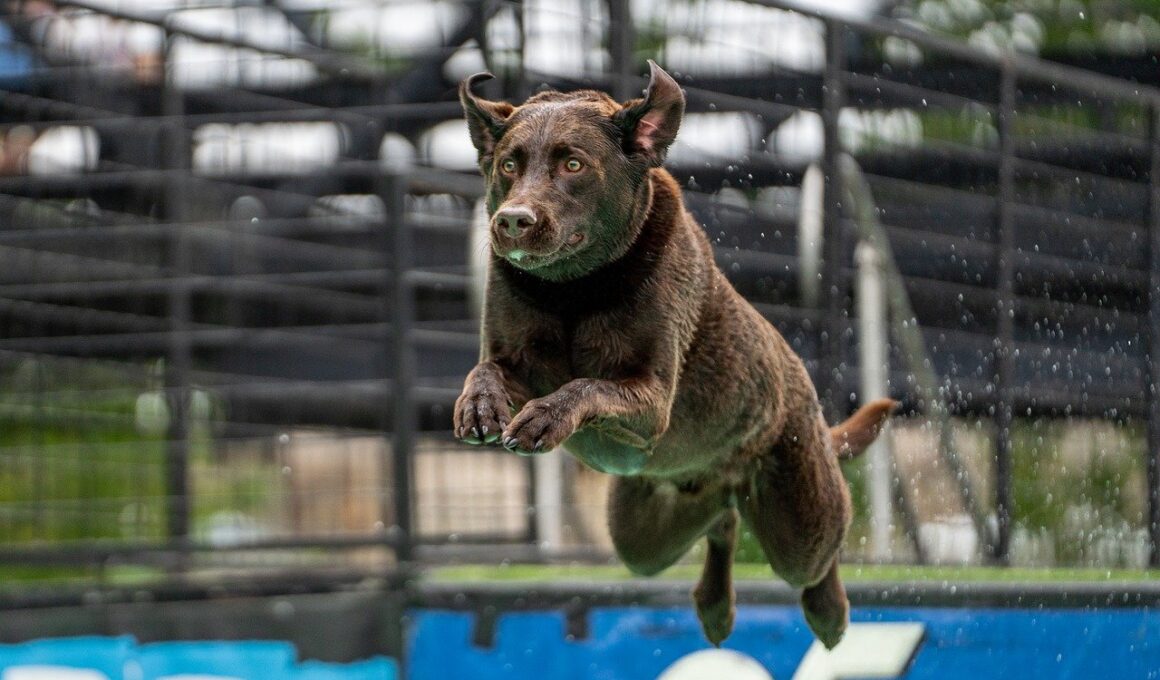Understanding the Judging Process
In dog shows, understanding the judging process is vital for both participants and spectators. Judges evaluate dogs based on specific criteria, determining their quality, appearance, and behavior. Essential to this process is the breed standard, which describes the ideal characteristics and traits of each breed. Judges must assess how closely each dog adheres to these standards. This includes examining various aspects such as body structure, coat texture, movement, and temperament. For competitors, it is crucial to familiarize themselves with breed standards before entering a show. By preparing adequately, they can optimize their performance and showcase their dog’s strengths effectively. Additionally, participating in practice shows or workshops can provide practical experience and improve handling skills. Judges do not only evaluate physical attributes; they also observe the dog’s behavior and engagement with the handler. The relationship between dog and owner plays a significant role in how the dog presents itself during a show. Ultimately, understanding these judging criteria can lead to better preparation and enhance the overall experience for everyone involved. Knowing what to expect during the evaluation is key to performing well in competition.
Evaluating Conformation and Movement
Conformation refers to the shape and structure of a dog as it relates to the breed standard. Each breed has specific ideal measurements, ratios, and features that judges expect to see. Movement is equally important, as it reflects the dog’s overall health and athleticism. In the ring, judges observe how well a dog moves. Fluid, coordinated movement suggests good construction and soundness, reflecting the breed’s intended use. In both evaluations, judges are trained to look for distinct features that set each breed apart. For example, a hound may require long, efficient strides, while a toy breed should appear lively and agile. Dogs should glide effortlessly around the ring, showcasing both their structure and training. Handlers play a crucial role in this presentation, so they need to ensure their dog is well-groomed and fit for competition. Additionally, dogs must be trained to walk properly on a lead, responding to their handler’s cues. The overall presentation, including grooming and handling technique, significantly affects the judges’ final impressions. Successful competitors often invest time in training and conditioning their dogs to achieve the best possible performance.
Temperament and Behavior Assessment
Temperament is vital in dog shows. Judges assess a dog’s behavior and interactions during the evaluation. A balanced temperament demonstrates training, socialization, and proper care. A dog should be calm yet alert while remaining friendly and eager to engage with the handler. Exhibiting stress or aggression can negatively influence a judge’s opinion. In fact, a dog’s attitude can sometimes outweigh physical attributes. Handlers must ensure their dogs are well-prepared to handle the environment of a dog show. Crowds and unfamiliar surroundings can stress them out, impacting their performance. Socializing dogs with diverse environments and experiences helps them remain composed and confident in the ring. Proper training reinforces desired behaviors, allowing dogs to showcase their best selves during judging. Judges also look for signs of respect and attachment between the dog and the handler. A strong, confident presentation reflects a good relationship, indicating dedication on the owner’s part. Awards often go to dogs that exhibit a perfect balance of stunning appearance and admirable temperament. Those competing in dog shows should strive to maintain a calm demeanor throughout the process, ensuring a positive experience for both themselves and their dogs.
The Importance of Grooming and Presentation
Grooming is critical in dog shows, as it enhances a dog’s natural beauty and allows the judge to assess its qualities accurately. Each breed has specific grooming requirements that owners must know and follow closely. For long-haired breeds, regular brushing helps prevent matting and displays the coat’s shine. Short-haired breeds may require fewer grooming sessions but still need attention to their overall cleanliness. Nail trimming and ear cleaning are additional grooming essentials that judges expect to see. Cleanliness indicates a responsible owner and a dog’s health. Judges appreciate dogs presented in immaculate condition, showcasing the owner’s dedication. Moreover, handlers must groom their dogs prior to competitions to ensure they look their best on show day. This effort often makes the difference between winning and losing, as appearance can significantly sway judges’ opinions. Additionally, handlers should ensure their dogs are well-fed and cared for leading up to the event. Healthy dogs not only exhibit better movement, but they also show more enthusiasm in the ring. Preparing for a dog show means optimizing every detail of presentation, fostering a successful atmosphere conducive to winning awards.
Class Structure in Dog Shows
Dog shows typically follow a structured class system to ensure fairness and organization during competitions. Each breed is categorized into classes based on various factors like age, gender, and experience level. For example, dogs may compete in puppy classes, which cater to younger entrants, while adult dogs have their own divisions. These classifications allow judges to evaluate dogs of similar backgrounds, promoting a level playing field. Beyond puppy and adult classes, many shows have additional categories like champion classes and veterans. Each class has specific eligibility requirements, ensuring that competitors are of comparable experience. Understanding this structure is crucial for competitors, as they must enter the appropriate class for their dog. Taking part in the right class enhances a competitor’s chance of success, enabling judges to make informed evaluations. Some shows also include group judging, where winners from breed classes compete against each other for the best in group title. This further showcases the best qualities of various breeds, highlighting unique characteristics. A careful analysis of class structure aids dog owners in preparing for shows, leading to better outcomes overall, as they become equipped with vital information necessary for competing effectively.
Strategies for Success
Success in dog shows is attainable with the right strategies in place. Competitors need to commit time and effort into training their dogs and practicing regularly. Efficient preparation entails familiarizing the canine with various show environments, ensuring it can handle distractions seamlessly. Work on the dog’s commands and incorporate socialization exercises. Create opportunities for the dog to interact with other individuals and animals. Proper socialization builds confidence, enabling dogs to perform better in the ring. Handlers should prioritize maintaining a positive bond with their dog as well. Bonding strengthens communication, fostering a beneficial relationship during competitions. Employing positive reinforcement techniques can support a dog’s eagerness to participate, making them more willing to showcase their skills. Studying successful competitors and their methods offers valuable insights, too. Observing seasoned handlers can shed light on effective techniques and strategies. With dedication, practice, and the right approach, competitors can enhance their chances of success. Participation in local shows can also provide practical experience without the pressure of major competitions. Incremental successes build confidence, enabling competitors to learn and grow together with their dogs over time.
Conclusion
In summary, understanding the judging criteria in dog shows is essential for participants aiming for success. Familiarity with breed standards, conformation evaluations, and movement assessments enhances preparation. Equally, attention to temperament, behaviour, and the quality of presentation reflect an owner’s commitment to their pet. Grooming plays a crucial role in achieving excellence, while knowledge of class structures facilitates better navigation through the competition process. Planning and practicing lead to overall improved performances. By applying the strategies discussed in this article, dog owners can refine their skills and maximize their chances of winning in competitions. A well-prepared dog that demonstrates confidence and composure can leave a lasting impression on judges. Ultimately, it is about building a strong, trusting relationship between handler and dog. By ensuring that the experience is enjoyable for both the dog and owner, competitors can contribute positively to the sport of dog shows. This commitment not only builds excellent memories but also fosters long-term success in the world of dog showing.
Through continual engagement and improvement, dog owners can unlock the full potential of their canine companions within dog shows.


